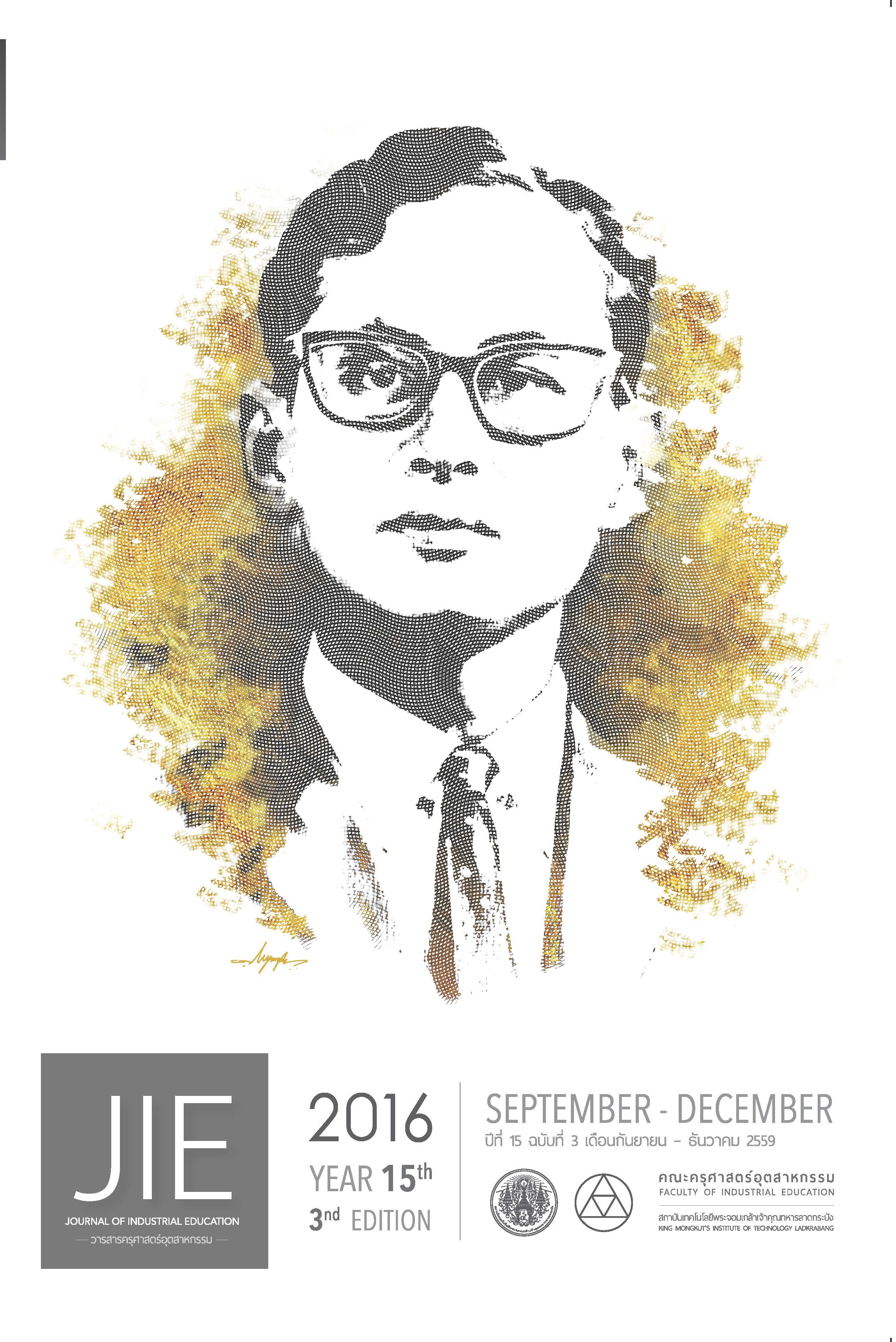THE DEVELOPMENT OF THE LEARNING ACTIVITY PACKAGES TO DEVELOP INNOVATIVE LEADERSHIP COMPETENCIES FOR UNDERGRADUATE STUDENTS
Keywords:
Development, Learning Activity Packages, Innovative Leadership CompetenciesAbstract
This study was to 1) develop the Learning Activity Packages to develop innovative leadership competencies for undergraduate students 2) compare innovative leadership competencies of undergraduate students before and after the application of the Learning Activity Packages that the researcher constructed. The sample group in this study was 33 undergraduate students who enrolled in leadership skills subject in semester 1/2015. The research instruments were 1) lesson plans using Learning Activity Packages 2) questionnaire asking for appropriateness of lesson plans 3) innovative leadership competencies questionnaires Data analysis was content analysis, mean, standard deviation and t-test. The research results revealed the following:
1) Four lesson plans were constructed using Learning Activity Packages covering 20 learning activities for developing 4 innovative leadership competencies. They are creative, confident, caring and courageous competencies. The sample learned for 24 hours. Learning Activities for Creative competency consisted of 5 activities with 6 hours duration, that is, Attribute Activity, Vision Creation Activity, Visualization Skills Activity, Analogies Activity and Case Study of a creative leader. Learning Activities for Confident competency consisted of 5 activities with 6 hours duration, that is, Self Esteem Activity, What are you good at Activity, Level of Confidence Activity, Your Idol Leader Activity and Case Study of a confident leader. Learning Activities for Caring competency consisted of 5 activities with 6 hours duration, that is, Who’s wrong Activity, Positive Feedback Activity, Perspectives Activity, Consequences Activity and Case Study of a caring leader. Learning Activities for Courageous competency consisted of 5 activities with 6 hours duration, that is, Choosing Colors Activity, Dare to Change Activity, Your Risky Goal Activity, Exchange Activity and Case Study of a courageous leader. The effectiveness of the Learning Activity Packages after revising according to experts’ opinions was appropriate to be used for developing innovative leadership competencies.
2) Innovative leadership competencies scores before and after the learning from the packages was 3.62 and 3.86, respectively. The posttest scores of innovative leadership competencies were higher significantly than the pretest scores at 0.05 level of significance. In particular, the highest competency development was caring ( = 4.20, S.D. = 0.22) and confident (
= 3.78, S.D. = 0.22) competencies. The lowest competency development was courageous (
= 3.74, S.D. = 0.28) and creative (
= 3.70, S.D. = 0.32) competencies.
In conclusion, the Learning Activity Packages can be used to develop innovative leadership competencies with positive results and the development of innovative leadership competencies will be more effective if there are support from educational institutions, self-awareness and self-discipline from learners and systematic development from teachers.
References
[2] Gumusluoglu, L., & Ilsev, A. 2009. Transformational Leadership and Organizational Innovation: The Roles of Internal and External Support for Innovation. Journal of Product Innovation Management, 26, p. 264-277.
[3] เกรียงศักดิ์ เจริญวงศ์ศักดิ์. 2551. สร้างภาวะผู้นำในเด็กและเยาวชนไทย. บางกอกทูเดย์. ค้นเมื่อ 5 มกราคม 2558, จากhttps://www.moe.go.th/moe/th/news/detail.php?NewsID=2567&Key=hotnews
[4] Higher Education Research Institute. 1996. A Social Change Model of Leadership Development (Version III). Los Angeles: University of California Los Angeles Higher Education Research Institute.
[5] Patchara Vanichvasin. 2009. A Development Model of Innovative Leadership Competencies in Selected Leaders in Thailand. Doctoral Dissertation, Assumption University.
[6] Van Velsor, E. & Wright, J. 2012. Expanding the Leadership Equation Developing Next-Generation Leaders. Center for Creative Leadership. Retrieved April30, 2016, from https://insights.ccl.org/wp-content/uploads/2015/04/ExpandingLeadershipEquation.pdf
[7] Mozhgan, A., Parivash, J., Nadergholi,G., & Jowkar, B. 2011. Student Leadership Competencies Development. Procedia Social and Behavioral Sciences, 15 (2011), p. 1616-1620.
[8] Rudolph, F. 1990. The American College and University: A History. Athens: The University of Georgia Press.
[9] Seemiller, C. 2014. The Student Leadership Competencies Guidebook. San Francisco: Jossey-Bass.
[10] Astin, A.W. 1993. An Empirical Typology of College Students. Journal of College Student Development, 34 (1), p. 36-46.
[11] DuBrin, A.J. 2010. Principles of Leadership. 6th Ed. Canada: South-Western Cengage Learning.
[12] Kuh, G.D., Shedd, J.D., & Whitt, E.J. 1987. Student Affairs and Liberal Education: Unrecognized (and Unappreciated) Common Law Partners. Journal of College Student Personnel, 28 (3), p. 252-260.
[13] อมร สุวรรณนิมิตร. 2558. กลวิธีการพัฒนาภาวะผู้นำของนิสิตพยาบาล. วารสารวิทยาศาสตร์และเทคโนโลยี มหาวิทยาลัยมหาสารคาม.ปีที่ 11 (ฉบับพิเศษ), น. 472-478.
[14] อรกัญญ์ เอี่ยมพญา. 2553. การพัฒนาหลักสูตรฝึกอบรมเพื่อเสริมสร้างภาวะผู้นำสำหรับผู้นำนักศึกษามหาวิทยาลัยราชภัฏ. วารสารครุศาสตร์อุตสาหกรรม, 9(1), น. 43-55.
[15] Mozhgan, A., Parivash, J., Nadergholi,G., & Jowkar, B. 2011. Student Leadership Competencies Development. Procedia Social and Behavioral Sciences, 15 (2011), p. 1616-1620.
[16] Cohen, D.J. 2007. The Very Separate Worlds of Academic and Practitioner Publications in Human Resource Management: Reasons for the Divide and Concrete Solutions for Bridging the Gap. Academy of Management Journal, 50 (5), p. 1027-1032.
Downloads
Published
How to Cite
Issue
Section
License
"The opinions and contents including the words in papers are responsibility by the authors."
"ข้อคิดเห็น เนื้อหา รวมทั้งการใช้ภาษาในบทความถือเป็นความรับผิดชอบของผู้เขียน"



